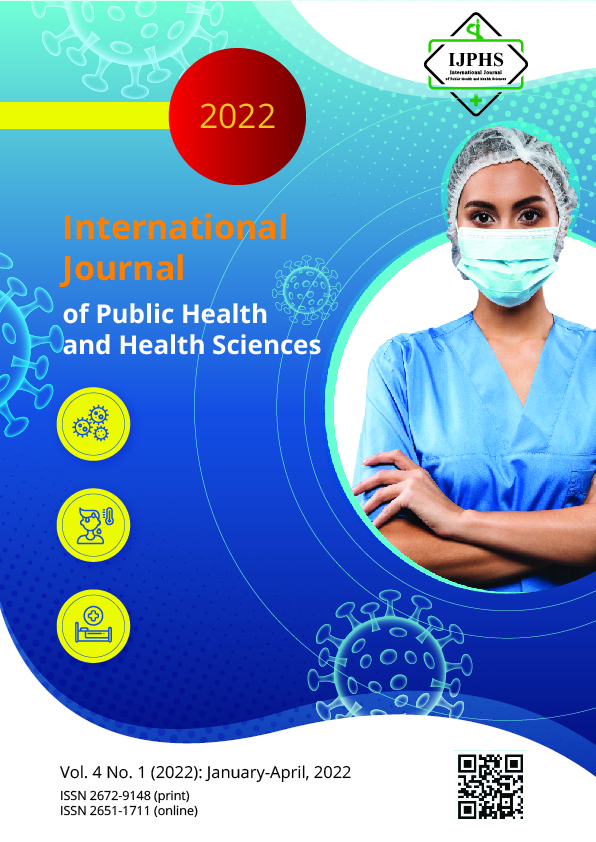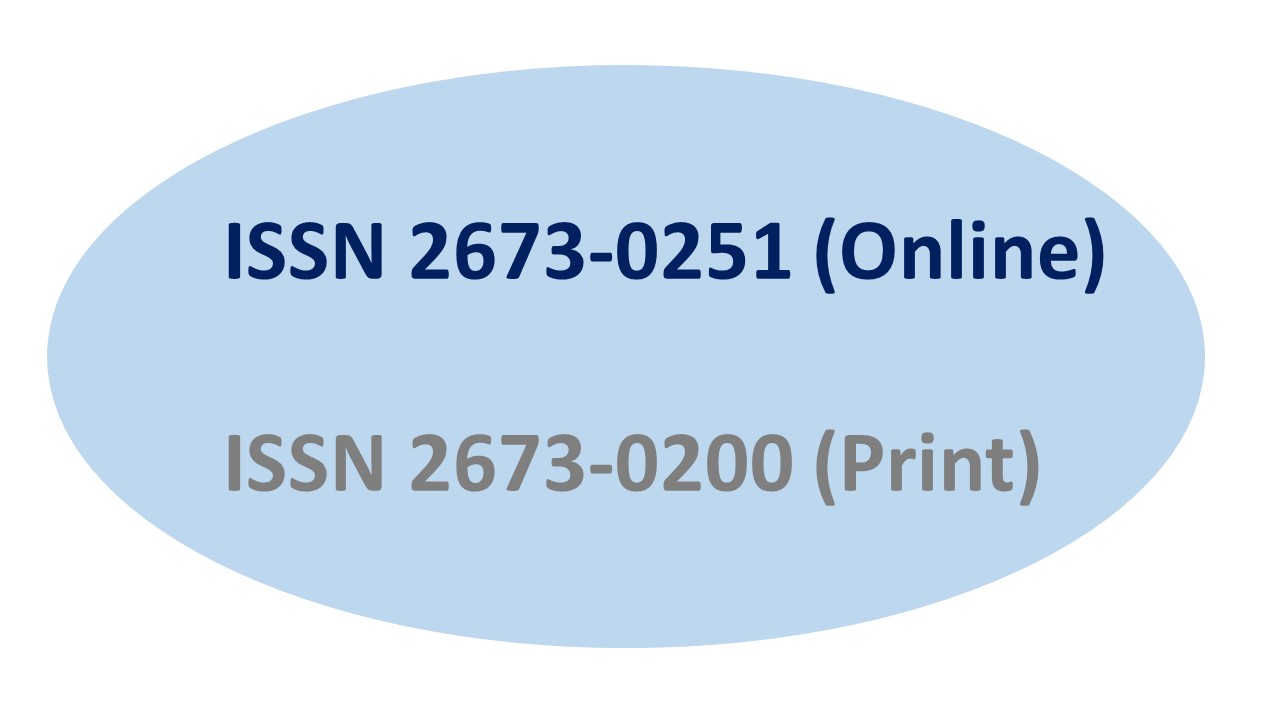Factors Affecting Intention to Wear Face Masks among Thai People
Keywords:
Attitude, perceived benefit of face masks, the pandemic risk perceptions, face mask availabilityAbstract
This study examined the factors influencing Thais’ intention to wear face masks. The predictors of intention to wear face masks included attitude, face mask cost, the pandemic risk perceptions, perceived benefits and face mask availability. This study gathered data using online questionnaires among 391 respondents recruited through convenience sampling. The conceptual framework was examined with the partial least squares path modelling and structural equation modelling (PLS-SEM) using the ADANCO software program (version 2.2.1) and SPSS (version 27). The empirical findings show the relationship between factors and intention to wear face masks. The results revealed that attitude had the most significant influence on intention to wear a face mask, followed by the perceived benefit of a face mask, pandemic risk perceptions, availability of face masks, and face mask cost. The respondents’ pandemic risk perceptions significantly influenced attitude. Also, their attitude was a significant mediator between their pandemic risk perceptions and their intention to wear face masks. Our study assists healthcare policymakers in developing strategies to encourage wearing face masks as part of infection prevention protocols. Policy makers can better understand the public’s factors that may increase their intention to wear a face mask during the COVID-19 pandemic by predicting the power of attitude, face mask cost, the pandemic risk perceptions, perceived benefits and face masks availability.
References
Ahmad, M., Iram, K., & Jabeen, G. (2020). Perception-based influence factors of intention to
adopt COVID-19 epidemic prevention in China. Environmental Research, 190.
Ajzen, I. (2001). Nature and Operation of Attitudes. Annual Review of Psychology, 52(1), 27.
Al-Marri, W., Al-Habaibeh, A., & Watkins, M. (2018). An Investigation into Domestic Energy
Consumption Behaviour and Public Awareness of Renewable Energy in Qatar. Sustainable Cities and Society, 41, 639-646.
Bhargava, S., McKeever, C., Sadoughifar, R., & Kroumpouzos, G. (2021). Availability of personal
protective equipment among dermatologists in the COVID-19 pandemic: Assessment and risk factors in a web-based, global study. Clinics in Dermatology.
Brug, J., Aro, A. R., & Richardus, J. H. (2009). Risk Perceptions and Behaviour: Towards
Pandemic Control of Emerging Infectious Diseases. Int. J. Behav. Med, 16, 3-6.
Burnett, M. L., & Sergi, C. M. (2020). Face Masks are Beneficial Regardless of the Level of
Infection in the Fight Against COVID-19. Disaster Medicine and Public Health Preparedness, 14(5), e47-e50
Chaabna, K., Doraiswamy, S., Mamtani, R., & Cheema, S. (2021). Facemask Uses in Community
Settings to Prevent Respiratory Infection Transmission: A Rapid Review and Meta-Analysis. International Journal of Infectious Diseases, 104, 198-206.
Chu, D. K., Akl, E. A., Duda, S., Solo, K., Yaacoub, S., Schünemann, H. J., Schünemann, H. J.,..
& Schünemann, H. J. (2020). Physical distancing, face masks, and eye protection to prevent person-to-person transmission of SARS-CoV-2 and COVID-19: A systematic review and meta-analysis. The Lancet, 395(10242), 1973–1987.
Chughtai, A. A., & Khan, W. (2020). Use of Personal Protective Equipment to Protect Against
Respiratory Infections in Pakistan: A Systematic Review. Journal of Infection and Public Health, 13(3), 385-390.
Egan, M., Acharya, A., Sounderajah, V., Xu, Y., Mottershaw, A., Phillips, R., ... & Darzi, A.
(2021). Evaluating the Effect of Infographics on Public Recall, Sentiment and Willingness to Use Face Masks during the COVID-19 Pandemic: A Randomized Internet-Based Questionnaire Study. BMC Public Health, 21(1), 1-10.
Feng, S., Shen, C., Xia, N., Song, W., Fan, M., & Cowling, B. J. (2020). Rational use of face masks
in the COVID-19 pandemic. The Lancet Respiratory Medicine, 8(5), 434-436.
He, Y. (2021). Health Risk Perceptions of the COVID-19 Pandemic and Preventive Behavior The
intention of Wearing Face Masks. Graduate Theses and Dissertations. Iowa State University, Capstones, USA. Retrieved from https://lib.dr.iastate.edu/etd/18511.
Irfan, M., Akhtar, N., Ahmad, M., Shahzad, F., Elavarasan, R. M., Wu, H., & Yang, C. (2021).
Assessing public willingness to wear face masks during the COVID-19 pandemic: fresh insights from the theory of planned behaviour. International Journal of Environmental Research and Public Health, 18(9), 4577.
Jung, L. S. (2014). A Research on the Relationship of Website Usability and Social Commerce.
Workshop on Business, Vol. 8, No. 5, pp. 15-18.
Kesselheim, A. S. (2013). Rising Health Care Costs and Life-Cycle Management in the
Pharmaceutical Market. PLoS medicine, 10(6), e1001461.
Larebo, Y. M., & Abame, D. E. (2021). Knowledge, attitudes, and practices of face mask utilisation
and associated factors in COVID-19 pandemic among Wachemo University Students, Southern Ethiopia: A cross-sectional study. PloS one, 16(9), e0257609
MacIntyre, C. R., Cauchemez, S., Dwyer, D. E., Seale, H., Cheung, P., Browne, G., ... & Ferguson,
N. (2009). Face mask use and control of respiratory virus transmission in households. Emerging infectious diseases, 15(2), 233.
MacIntyre, C. R., & Chughtai, A. A. (2020). A Rapid Systematic Review of the Efficacy of Face
Masks and Respirators Against Coronaviruses and Other Respiratory Transmissible Viruses for the Community, Healthcare Workers and Sick Patients. International Journal of Nursing Studies, 108, 103629.
Shah, N., Kalwar, M. S., & Soomro, B. A. (2020). Early COVID-19 Outbreak, Individuals’ Mask
Attitudes and Purchase Intentions: A Cohesive Care. Journal of Science and Technology Policy Management.
Shukman, D. (2020). Coronavirus: Expert panel to assess face mask used by the public. BBC News.
Retrieved from https://www.bbc.com/news/science-environment-52126735.
Stevens, A. (2020). Governments cannot just ‘Follow the Science’ on COVID-19. Nature Human
Behaviour, 4(6), 560-560.
Siripipatthanakul, S. & Vui, C. N. (2021). Dental practice-related factors and patient loyalty in
dental clinics, Laem Chabang, Thailand: The mediating role of patient satisfaction. International Journal of Behavioral Analytics, 1(2), 1–17.
Thampanishvong, K. & Wibulpolprasert W. (2020). Face mask crisis of another design. Retrieved
from https://www.bangkokpost.com/opinion/opinion/1924908/.
Tso, R. V., & Cowling, B. J. (2020). Importance of Face Masks for COVID-19: A Call for Effective
Public Education. Clinical Infectious Diseases, 71(16), 2195-2198.
Tran, T. K. P. (2021). Critical Factors Affecting Masks Purchasing Intention of Consumers During
COVID-19 Pandemic: An Empirical Study in Vietnam. The Journal of Asian Finance, Economics and Business, 8(5), 1011-1017.
Wancharoen, S. (2021). Face Mask Rules, Curfews Expanded. Bangkok Post. Retrieved from
https://www.bangkokpost.com/thailand/general/2106951/.
Weiss, M. M., Weiss, P. D., Weiss, D. E., & Weiss, J. B. (2007). Disrupting the Transmission of
Influenza A: Face Masks and Ultraviolet Light as Control Measures. American Journal of Public Health, 97(Supplement_1), S32-S37.
Zhang, B., Li, Z., & Jiang, L. (2021). The Intentions to Wear Face Masks and the Differences in
Preventive Behaviors between Urban and Rural Areas during COVID-19: An Analysis Based on the Technology Acceptance Model. International Journal of Environmental Research and Public Health, 18(19), 9988.
Zhao, X. (2020). Experiencing the Pandemic: Narrative Reflection About Two Coronavirus
Outbreaks. Health Communication, 1-4.
Zhou, M., Long, P., Kong, N., & Campy, K. S. (2021). Characterising Wuhan Residents’ Mask-
Wearing Intention at Early Stages of the COVID-19 Pandemic. Patient Education and Counseling, 104(8), 1868-1877.
Zikmund, W.G. (2003). Business Research Methods 2nd ed. Chicago. The Dryden Press.
Downloads
Published
Issue
Section
License
Copyright (c) 2022 International Journal of Public Health and Health Sciences

This work is licensed under a Creative Commons Attribution-NonCommercial-NoDerivatives 4.0 International License.
If the manuscript is accepted for publication, copyright of the article shall be assigned to the IJPHS. After acceptance of a manuscript, the authors will be requested to complete a copyright transfer agreement form







